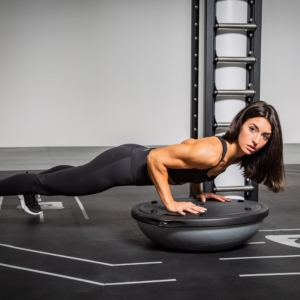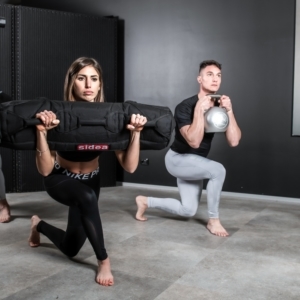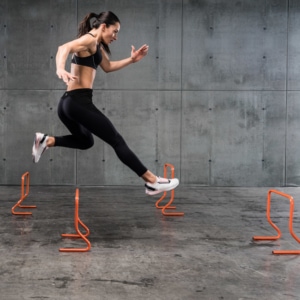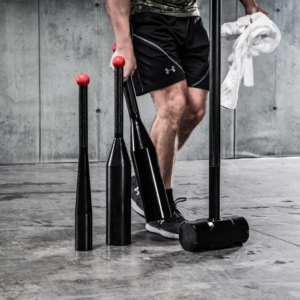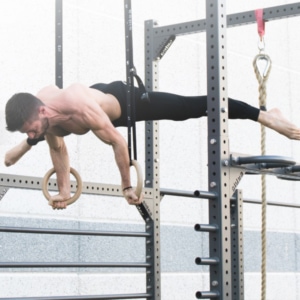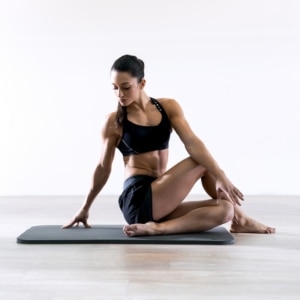🇮🇹 Leggi in Italiano
For the first time in the history of fitness, glutes training has been the subject of numerous scientific studies. The world of research, of which I also belong, has finally taken an interest in the sphere of training with weight overloads. The beneficial impact that this type of exercise has on aesthetics, as well as on performance, has been demonstrated.
When it comes to the glutes, the question everyone asks is always the same: “What is the best workout?”
Before coming to any premature conclusions, let me add that there are no better or less useful exercises, but there are some that are beneficial and some that are less effective. And this applies to all muscle groups: if you want maximum development of the chest, you cannot narrow down your training routine, limiting it only to flat bench, but you must also work on inclined planes and with horizontal adduction movements. The deadlift exercise can help achieve a broad, strong, and thick back, but, by itself is not enough: you will also have to perform traction, pulldown, and rowing. This rationale is also valid for the glutes: it is not enough to think that only squat is sufficient, but it will be necessary to carry out movement variations on all levels by performing exercises such as hip thrusts and abductions.
The functions of the glutes
The squats, just like the pull-ups and lunges, are a set of functional exercises. Nevertheless, they always and only work on the vertical hip extension, and we know that the glutes, besides being three distinct muscles (small, medium, and large gluteus), also have different functions:
- Hip extension
- Hip Abduction
- External hip rotation
- Retroversion of the pelvis (actually this movement, as far as the femoral head and the acetabulum are concerned, is associated with the hip extension)
Mainly because they have all these functions, it is beneficial to include exercises that involve all of them in glutes training routine. It goes without saying that for each of them, the training methodology must be appropriately adjusted, since some movements are better suited to high weight loads, while others to lower loads. Even the use of auxotonic resistances such as elastic bands can prove to be the wisest call.
Muscular hypertrophy
When we talk about muscle hypertrophy, three main factors come into play:
- Mechanical tension: apply a progressive weight overload on exercises such as squats, hip thrusts, and deadlift to increase mechanical pressure.
- Muscle Damage: rely on single-sided exercises such as lunges, b-stance hip thrust, and single-leg deadlift to boost muscle stimulation.
- Metabolic stress: Horizontal hip hinge against gravity and abductions, such as hyper-extensions or exercises with an elastic band to enhance metabolic stress.
An additional useful trick could be to implement pelvis retroversion in workout routines where maximum gluteus tension occurs when the muscle is in full tightening/contraction. This exercise proves to be ideal in hip thrust and its variations. Also, in classic/reverse hyper-extensions, as well as in the closing phase of the various deadlifts.
Studies and scientific research about glutes training
Currently, there are many studies about gluteal activation in the various exercises investigated through EMG (electromyography). Assessments performed through EMG provide a precise indication of nerve stimulation in a particular area. However, it does not entail the advantage of one exercise over another, as other factors such as ROM (Range Of Movement), TUT (Time Under Tension), PT (Peak Tension), and much more come into play.
If we carefully analyze some studies, we can notice that the Contreras team, back in 2015, reported that hip thrust brings twice as much muscle activation to the great gluteus compared to the squat. Furthermore, the 2018 study by Mc. Curdy et al. highlighted how squat splits are superior to classic squat concerning gluteal activation. A 2018 survey by Barbalho et al., the first to investigate the increase in muscle mass and not just EMG, demonstrated that the hypertrophy of the gluteal region was much more significant when performing squats rather than hip thrusts. Unfortunately, however, shortly after its publication, it was proven by such exponents as Layne Norton and Greg Nuckols how the study was misleadingly conducted.
Conclusions
Generally speaking, we can, therefore, safely state that glutes training must be varied both in terms of variety and in terms of muscle mass stimulus. Only that way can we be confident that we are working out effectively. The following list could work as a reference for a training session involving the three gluteal muscles with all their functions:
- Barbell back squats: 4 x 6
- Barbell Hip-thrust with hip/pelvic retroversion: 3 x 8-10
- Bulgarian split squat with dumbbells: 3 x 12 per side
- Romanian barbell deadlifts: 2 x 15
- Quadruped transverse hip abductions with an elastic band: 2 x 20 per side
- Expert in women’s training and bodybuilding
- Owner of GluteX personal training studio
- Degree in Human Movement and Sport Sciences. Certified Elite Trainer ISSA USA


